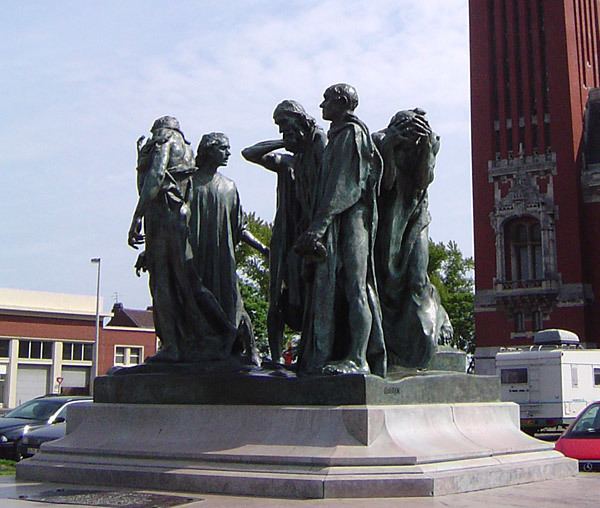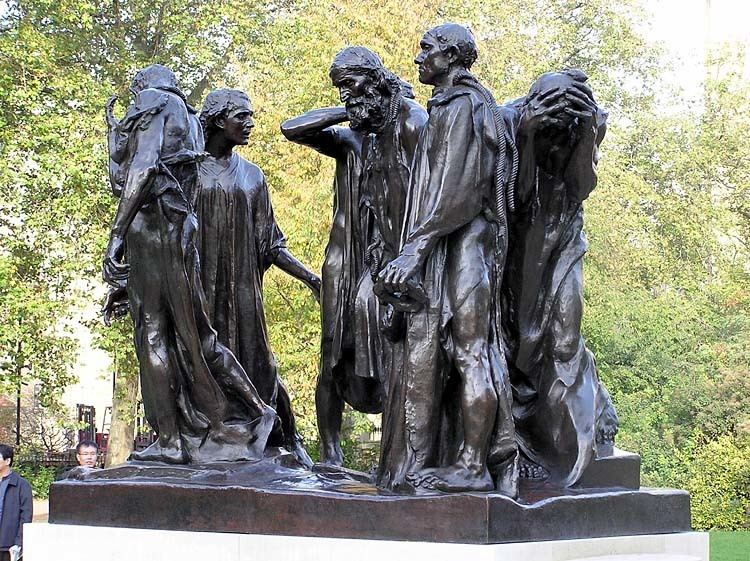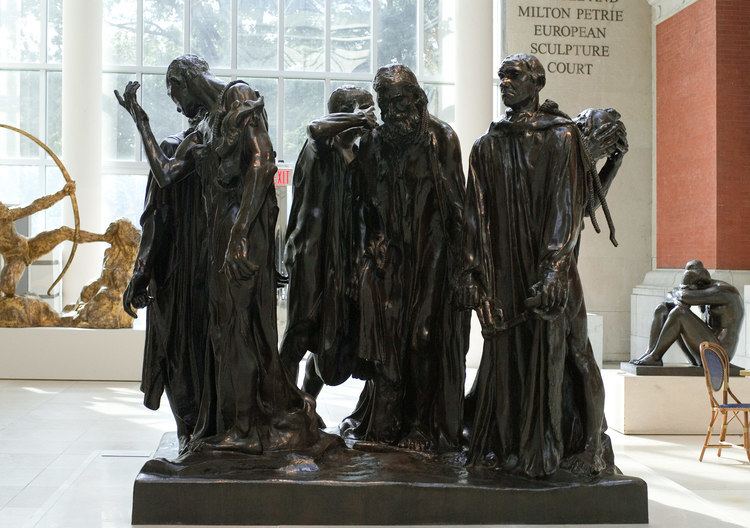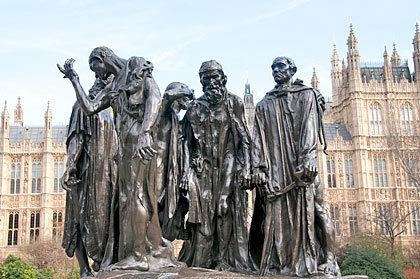Year 1884–9 Created 1884–1889 | Type Bronze Period Impressionism | |
 | ||
Dimensions 201.6 cm × 205.4 cm × 195.9 cm ( 79 ⁄8 in × 80 ⁄8 in × 77 ⁄8 in) Similar | ||
A study of the burghers of calais
Les Bourgeois de Calais is one of the most famous sculptures by Auguste Rodin. It commemorates an occurrence during the Hundred Years' War, when Calais, an important French port on the English Channel, was under siege by the English for over a year. Calais commissioned Rodin to create the sculpture in 1884, and the work was completed in 1889.
Contents
- A study of the burghers of calais
- The burghers of calais by auguste rodin
- History
- Composition
- Casts
- References

The burghers of calais by auguste rodin
History

England's Edward III, after a victory in the Battle of Crécy, laid siege to Calais, while Philip VI of France ordered the city to hold out at all costs. Philip failed to lift the siege, and starvation eventually forced the city to parley for surrender.

According to medieval writer Jean Froissart, Edward offered to spare the people of the city if six of its top leaders would surrender themselves to him, presumably to be executed. Edward demanded that they walk out wearing nooses around their necks, and carrying the keys to the city and castle. One of the wealthiest of the town leaders, Eustache de Saint Pierre, volunteered first, and five other burghers joined with him. Saint Pierre led this envoy of volunteers to the city gates. It was this moment, and this poignant mix of defeat, heroic self-sacrifice, and willingness to face imminent death that Rodin captured in his sculpture, scaled somewhat larger than life.

Although the burghers expected to be executed, their lives were spared by the intervention of England's queen, Philippa of Hainault, who persuaded her husband to exercise mercy by claiming that their deaths would be a bad omen for her unborn child. (Her son, Thomas of Windsor, only lived for one year.)
Composition
The City of Calais had attempted to erect a statue of Eustache de Saint Pierre, eldest of the burghers, since 1845. Two prior artists were prevented from executing the sculpture: the first, David d'Angers, by his death; and the second, Auguste Clésinger, by the Franco-Prussian War. In 1884 the municipal corporation of the city invited several artists, Rodin amongst them, to submit proposals for the project.
Rodin's design was controversial. The public had a lack of appreciation for it because it didn't have "overtly heroic antique references" which were considered integral to public sculpture. It was not a pyramidal arrangement and contained no allegorical figures. It was intended to be placed at ground level, rather than on a pedestal. The burghers were not presented in a positive image of glory; instead, they display "pain, anguish and fatalism". To Rodin, this was nevertheless heroic, the heroism of self-sacrifice.
In 1895 the monument was installed in Calais on a large pedestal in front of Parc Richelieu, a public park, contrary to the sculptor's wishes, who wanted contemporary townsfolk to "almost bump into" the figures and feel solidarity with them. Only later was his vision realized, when the sculpture was moved in front of the newly completed town hall of Calais, where it now rests on a much lower base.
Casts
Under French law no more than twelve original casts of works of Rodin may be made.
The first cast of the group of six figures, cast in 1895 still stands in Calais. Other original casts stand at:
Sculptures of the individual figures from the monument are on the campus of Stanford University.
A study of Jean d'Aire stands in the Visual Arts Center at Davidson College. It was cast posthumously, in 1972.
"The man with the key" figure is on the Sommerro park in Oslo, Norway [1]
